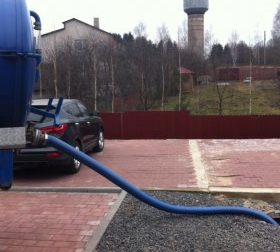Why water doesn’t leave in a cesspool

Hello! Tell me what to do if the cesspool is quickly filled. At first, it was pumped out once every 3 years, but now we call the sewage pumps almost every month. What could be the reason?
Answer
Most likely, in this case, a simple drainage well of a filtration type is used. The bottom of such structures is a gravel-sand pillow 40-50 cm high. It is thanks to this drainage layer that liquid runoff is discharged into the ground.
Over time, the drainage becomes clogged with silty deposits and grease, which literally seals the bottom. Of course, the absorption of water in this case is difficult. In addition, earlier the liquid could go into the gaps between the rings - no one seals them when arranging such a cesspool. Now every gap is clogged with waste, so these wastewater paths are also closed.
The best way out of this situation is to build an additional filter chamberinto which liquid effluents will overflow from an existing pit. Thus, you get a full septic tank - it will not pollute the soil. If you do not have such an opportunity, then anaerobic bacteria are used to thin the solid fraction. Eating waste, they will destroy the cause of the blockage and restore drainage.
Another way to increase the throughput of the sewage pit is to make holes in the walls of the rings for water outlet - this is how special concrete rings for filtration collectors are arranged. Drilling with a diameter of up to 50 mm is carried out in a checkerboard pattern, with intervals of 30-40 cm. In this case, the drains should be completely pumped out and the pit aired. The latter is a necessary safety measure, since the bottom of the well may be completely free of air - it is displaced by carbon dioxide from decaying waste.
You can learn about how to turn a pit into a septic tank from this article:https://aquatech.tomathouse.com/en/kanalizaciya/septiki/septik-iz-betonnyx-kolec-svoimi-rukami.html
The principles of bacteriological cleaning of a cesspool can be found here:https://aquatech.tomathouse.com/en/kanalizaciya/septiki/septik-stroy/bakterii-dlya-septikov.html


